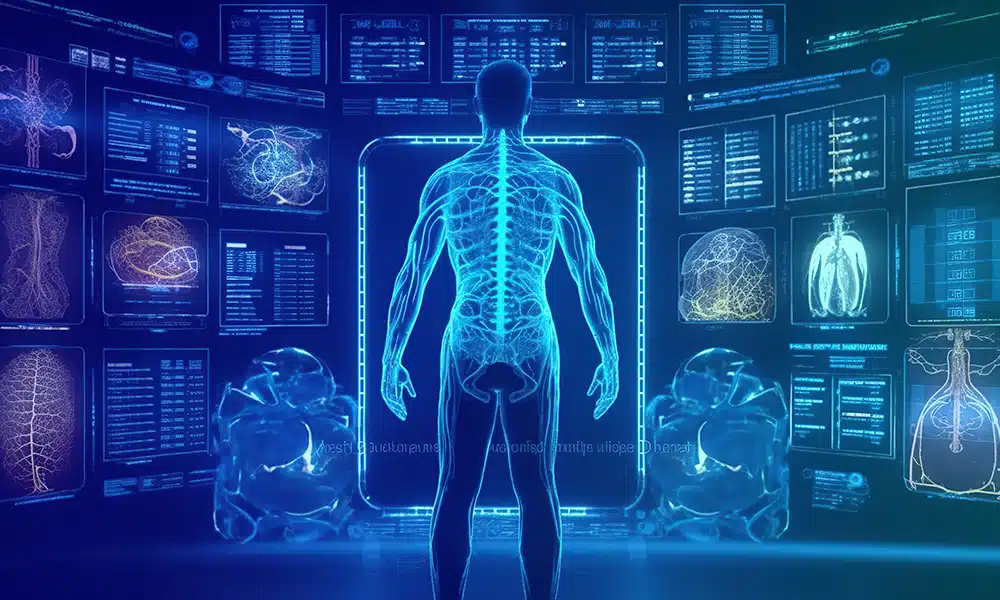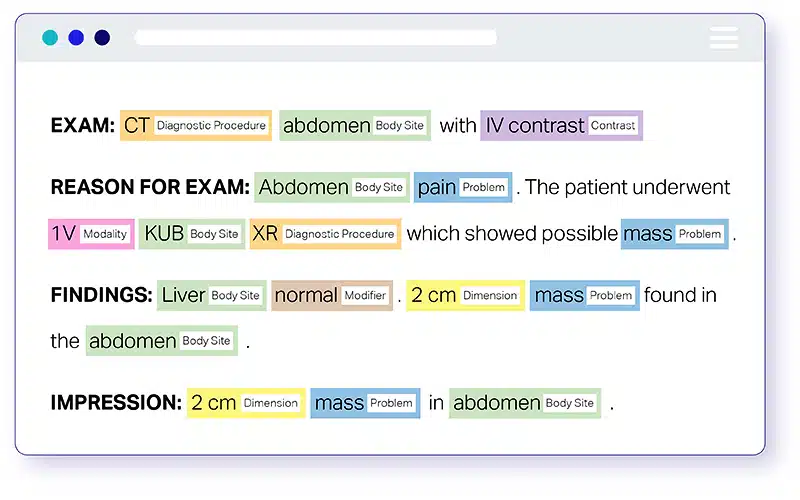Radiology plays a crucial role in healthcare. It uses imaging techniques like CT scans, X-rays, and MRI to diagnose and treat various conditions.
Natural Language Processing (NLP) emerged as a critical technology in radiology in recent times. NLP processes and understands human language to help analyze radiology reports. This technology can change how radiologists work and make it easier to handle complex data.
This article will explore the role of natural language processing in radiology to make it more efficient and effective in patient care.
The Role of NLP in Radiology
NLP, a machine learning technique, helps computers understand human language. In radiology, NLP plays a vital role. It helps analyze and interpret the text in radiology reports.
Radiology reports are often complex. They include findings from studies and procedures in a textual format. NLP helps break down this complexity. It processes the text to make it easier for radiologists to find and use vital information.
NLP allows for quicker and more accurate analysis of reports. This change helps radiologists make better decisions for patient care.
Applications of NLP in Radiology
NLP’s integration into radiology has led to several innovative applications. It enhances how radiologists work with imaging and reports. Here’s an overview of these applications:
Report Generation
NLP assists radiologists in generating detailed reports. It parses complex medical texts and extracts critical information. This includes identifying tumors, fractures, and other abnormalities. NLP’s ability to recognize and categorize medical terms greatly speeds up report preparation.
Clinical Decision Support
NLP quickly scans lengthy reports to identify critical phrases and patterns. This helps in early detection of severe conditions and improves patient care planning.
Medical Image Analysis
In medical image analysis, NLP plays a transformative role. It interprets image data to automate the process and provides textual descriptions. For instance, it can analyze X-rays and identify abnormalities to help radiologists in diagnosis.
Patient Monitoring
NLP analyzes a series of radiology reports to enhance patient monitoring. It provides quantitative data on changes in medical conditions, such as tumor growth. This information can help adjust treatment plans and assess patient progress.
Automated Clinical Entity Detection
NLP automatically identifies clinical entities in radiology reports. This includes body parts, test results, and diseases. It presents this information in a structured manner to save time for radiologists.
Detection of Anatomical and Observation Entities
NLP algorithms can detect specific anatomical and observation entities in radiology reports. They extract information like the location and size of abnormalities. It provides detailed insights for further medical analysis.
Assigning Assertion Status
NLP in radiology can assign levels of certainty to findings in imaging reports. It determines whether a condition is confirmed, suspected, or negative, clarifying the diagnosis process.
Identify Relations
NLP identifies relationships between various elements in radiology reports, like problems, tests, and findings. This helps healthcare providers understand the clinical context and make informed decisions.
These applications of NLP in radiology demonstrate its critical role in enhancing the accuracy, efficiency, and overall quality of patient care in medical imaging.
Benefits of NLP in Radiology
NLP offers significant advantages in radiology to enhance the efficiency and effectiveness of patient care.
Accuracy in Diagnoses
NLP processes large amounts of data from radiology reports. This approach leads to precise, reliable diagnoses.
Time Efficiency
NLP streamlines the analysis of radiology reports. It saves time for radiologists and allows them to focus more on patient care.
Enhanced Patient Monitoring
NLP analyzes trends in reports and provides insights into disease progression. This helps in adjusting treatment plans timely.
Organizing Data
NLP organizes radiology report data into structured formats. This makes patient information easy to access and interpret.
Personalized Patient Care
NLP supports personalized care. It analyzes detailed data from reports for tailored treatment plans.
Research and Development
NLP contributes to medical research. It extracts and synthesizes information that helps in scientific advancements.
Challenges and Future Directions
Implementing NLP in radiology comes with challenges.
- Privacy Concerns: Sharing radiological data raises privacy issues. Ensuring data security while collecting diverse data is a major challenge.
- Data Annotation: Manual annotation of radiology images is time-consuming and expensive. Developing automated methods for this becomes crucial.
- Hardware Limitations: Large image files need a lot of storage. Powerful computing resources are essential for effective use.
- Standardization: Variability in image scanning affects data reliability. Standardizing protocols is necessary to reduce errors.
- High-Quality Data: Accurate machine learning predictions depend on high-quality data. Collecting such data is essential.
The future will likely see solutions to these challenges—advances in healthcare AI and NLP promise to further enhance radiology practices.
Conclusion
NLP in radiology represents a significant advancement in healthcare technology. It improves diagnosis accuracy, saves time, and enhances patient care. The technology faces challenges like data privacy and the need for high-quality data.
We can expect future advancements in AI and NLP to address the shortcomings and revolutionize radiology further. With continued development and application, NLP promises to significantly improve healthcare outcomes and transform radiological practices.

 In
In  NLP automatically identifies clinical entities in radiology reports. This includes body parts, test results, and diseases. It presents this information in a structured manner to save time for radiologists.
NLP automatically identifies clinical entities in radiology reports. This includes body parts, test results, and diseases. It presents this information in a structured manner to save time for radiologists.

